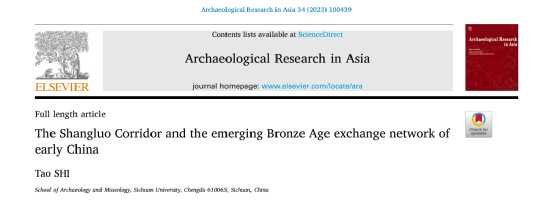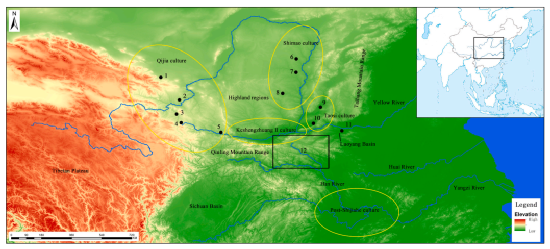Associate Professor Shi Tao published the latest research on the formation of early states, examining the formation of the Chinese Bronze Age trade network from the Shangluo Corridor.

Recently, Shi Tao, associate professor of the School of Archeology and Museology at Sichuan University, conducted a comprehensive study of the Neolithic-Early Bronze Age archaeological data from the Shangluo Corridor. The article, titled "The Shangluo Corridor and the emerging Bronze Age exchange network of early China," was published in the international important archaeological journal Archaeological Research in Asia. Shi Tao is the sole author of this article.
Author Profile
Shi Tao, Associate Professor. His research interests mainly include Pre-Qin archeology, archaeological theory, archaeobotany, pottery analysis, etc. 2005-2009, Bachelor's degree in Archeology from the Department of Anthropology, Sun Yat-sen University. 2009-2012, Master's degree from the School of Archeology and Museology, Peking University. 2013-2018, Ph.D. from the University of California, Los Angeles (UCLA). He joined the School of History and Culture, Sichuan University in 2018. He has participated in the excavation of the Menhuo site in Xichuan, Henan, the Baligang site in Dengzhou, Henan, the Jiaojiayuan site in Shiyan, Hubei, the Baodun site in Xinjin, Chengdu, Sichuan, the Huaca Soto in Chincha, Peru, and the Jijiaocheng site in Lixian, Hunan. Published academic papers such as "Understanding the transition to agropastoralism in North China: archaeobotanical and zooarchaeological evidence (2022)" and "Copper mining and metallurgy in the Zhongtiao Mountains and Yangzi River Valleys in Early China (2021)".
Content Summary
The Longshan-Erlitou period (2300 BC - 1520 BC) was a critical period in China's transition from the Late Neolithic to the Early Bronze Age. The emergence of Erlitou was a landmark event in the arrival of the Bronze Age in China, laying the foundation for a Bronze Age trade network centered on the Central Plains (Luoyang Basin).

Figure 1: Main cultures, sites and research areas mentioned in the article
Regarding the rise of this Central Plains-centered trade system, the author raises the following questions:
How did this Central Plains-centered political and economic system rapidly form in the Luoyang Basin, where there were no large complex societies during the Longshan period?
How did Erlitou acquire a series of knowledge related to the establishment of the state, such as metallurgy and mining, in a short period of time, and form a trade system with areas such as southern Shanxi, southern Shaanxi, and the Jianghan region?
How should we observe the formation of this trade system during the Longshan-Erlitou transition through archaeological data?
This article starts from a new research background and perspective. In recent studies by some scholars, Erlitou has been regarded as a
